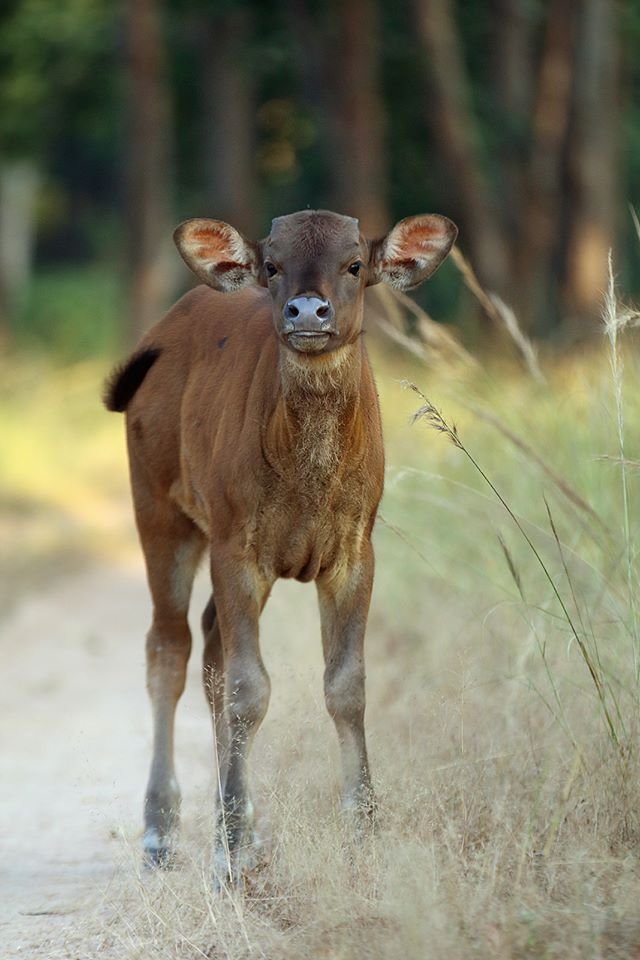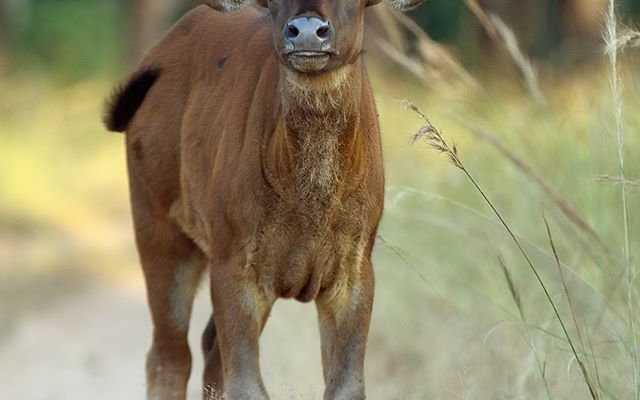
Gaurs are huge, powerful creatures, known for their shaggy coats and massive horns. Think of them as the gentle giants of the grazing world. But even though they look tough, they show an incredibly nurturing side when it comes to their young. In the wild, these animals face numerous challenges, from predators lurking in the shadows to finding food and shelter. Understanding how gaurs raise their young gives us a glimpse into the beautiful complexities of nature and the importance of family bonds in the animal kingdom.
The Birth of the Calf: A Critical Beginning
The journey of a gaur calf starts with its birth, which usually happens in the spring months. A pregnant gaur will find a secluded spot, often away from the herd, to give birth. This is important because it keeps the newborn safe from potential predators. The mother’s instinct kicks in, as she chooses a hidden area where the calf can remain undisturbed during its first days of life.
Once born, the calf is surprisingly mobile. Within minutes, it can stand and walk. This ability is crucial, especially in a world filled with dangers. The mother stays close, making sure her calf learns to navigate its surroundings. In these early days, you can almost sense the mother’s protectiveness as she keeps a watchful eye, ready to react at the first sign of trouble.
Nurturing Through Nutrition: A Mother’s Role
After birth, the primary role of the mother is to feed and care for her calf. For the first few months, the calf relies almost exclusively on its mother’s milk. The mother’s milk is rich in nutrients, providing the calf with the energy it needs to grow and develop. Here’s the thing: a calf needs to gain strength quickly to keep up with the herd and avoid predators.
As the calf grows older, around 6 months, it starts to graze on grass and other vegetation. But the mother continues to play a vital role, guiding her young one to safe and nutritious food sources. This relationship is a beautiful example of maternal care in the wild—where teaching and nurturing go hand in hand. The connection between mother and calf during this time is strong, and it sets the foundation for the calf’s future.
Herd Life: The Importance of Social Structure
In the wild, gaurs are social animals and live in herds, which can include up to 30 individuals. This social structure is essential for the survival of the young. Young calves learn not only from their mothers but also from other herd members. They watch and mimic the behaviors of older, more experienced individuals, which is a natural way of learning how to navigate their environment.
Being in a herd also provides extra protection. When threats arise, such as predators, the herd will unite to defend each other. Mothers will stand close to their calves, creating a protective circle. This teamwork ensures that the young have a better chance of survival. You might think of it like a big family reunion, where everyone watches out for each other.
Facing Challenges: Predator Awareness
Life in the wild isn’t without its dangers. Calves are particularly vulnerable to predators like tigers and leopards. As a result, mother gaurs teach their young how to be alert and aware of their surroundings. From a young age, calves learn to recognize the sounds and scents of potential threats.
Watching a mother and calf interact can be fascinating. When the mother senses danger, she often makes specific calls to alert her calf, signaling it to stay close. As they move through their habitat, she encourages her young one to always be cautious. This kind of training is essential for survival, as it prepares the calves to eventually navigate threats on their own.
Growing Up: Independence in the Herd
As gau calves grow older, they gradually become more independent. By the time they’re about 1 to 2 years old, they start venturing away from their mothers for short periods. This stage is crucial for developing their own skills and confidence. They learn to graze, socialize with other calves, and even interact with the larger herd members.
While independence is important, the bond between a mother and her calf remains strong. Even as they grow, young gaurs will often return to their mothers for comfort and guidance. This connection is a reminder that even in the wild, relationships matter. It’s a blend of letting go and holding on, showcasing the balance of nurturing and independence.
The Circle of Life: Preparing for Parenthood
When a young gaur reaches maturity, they start to prepare for their future roles as parents themselves. The lessons they learned from their mothers and the social dynamics of the herd shape their understanding of how to care for their young. It’s a fascinating cycle of life that continues through generations.
Mature gaurs will eventually mate and give birth to their own calves, fostering the same nurturing environment they experienced as younger ones. This cycle highlights how crucial it is for each generation to pass on knowledge and care practices. The herd plays an essential role in shaping these future parents, ensuring that the instincts remain alive.
Why Understanding Gaur Parenting Matters
By exploring how gaurs raise their young, we gain valuable insights into the importance of family and community in the animal kingdom. These lessons extend beyond just gaurs—they remind us of the natural instincts present in all species, including humans. Understanding this can help us appreciate the delicate balance of life and the responsibilities of nurturing the next generation.
Moreover, recognizing the challenges that gaurs face can lead us to support conservation efforts aimed at protecting their habitats. As we learn about their lives, we become more aware of the interconnectedness of all living beings and the importance of preserving their environments.
In conclusion, watching how gaurs raise their young offers a glimpse into a world filled with instinct, care, and survival. From the moment a calf is born to when it eventually becomes a parent, every step is intertwined with lessons from its mother and the herd. These nurturing dynamics are a testament to the strength of family bonds, not just in the wild, but in all forms of life. As we strive to protect these magnificent animals, we also protect the rich tapestry of nature that they embody.

